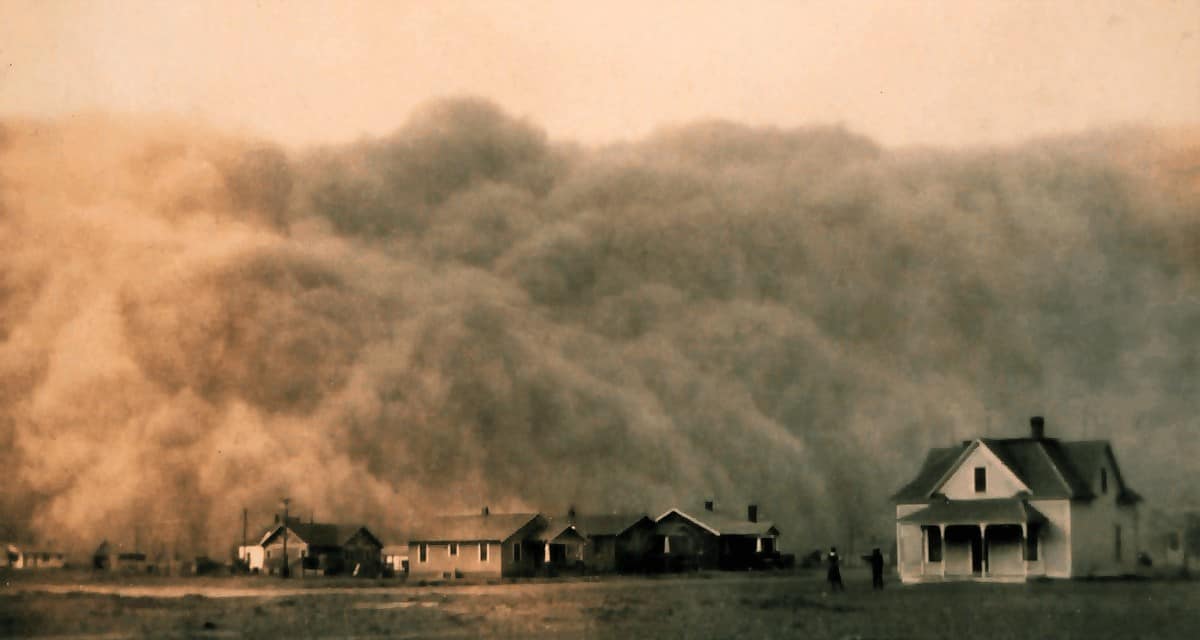On this day in 1935, a powerful storm strips South Dakota of much of its topsoil. The state had suffered a severe drought and much of its formerly rich topsoil was no more than dust. The powerful winds blew the soil far and wide. It was only one of many windstorms that year. As in the case of South Dakota the winds caused great dust storms that traveled far and wide. It was a real problem for the entire country, as the dust storms reached from New York State to South Dakota and blanketing much of the areas affected in a cloud of dust. The dust storms were very severe and people were forced indoors and life came to a halt on many farms and small towns on the plain.
The terrible dust storms ravaged the plains of America in the 1930s and they are calculated to have resulted in dust being spread over an area of several million acres. The storms would start with a high wind and they would drive the dust into the air until they formed huge black clouds over the land. The dust storms were not just an inconvenience they caused massive economic damage at a time when the country was experiencing the ‘Great Depression’. In the aftermath of the Wall Street Crash the economy had crashed and at one time more than one in four Americans were out of work. The great dust storms that plagued the mid-West, in particular, they caused massive economic damage as they devastated many farms and millions of acres of land became infertile.

So bad were the storms that the plains of the United States became known as the Dust Bowl. Many people were forced to leave the region and head to California because of these storms on the plains.
The storms persisted throughout the 1930s. It is believed that 1938 was the worst year of the storm when some 750 million tons of topsoil was simply blown away. The Dust Bowl as it came to be known is regarded as the most severe environmental crisis in the history of the United States.
There is still some debate over the exact causes of the Dust Bowl. It is believed that drought and an unusual period of extreme weather caused the massive dust storms. Another school of thought was that the farmers had over-farmed the land and this led to the topsoil becoming loose and eventually blowing away in the wind.
The Roosevelt Administration responded by giving millions of dollars in aid to farmers and sought to educate them in conservation techniques. The rains returned just before America entered the war in and once more farmers produced crops of wheat. The conservation techniques taught to the farmers seemed to have worked, because despite many droughts since there has been no repeat, of the Dust Bowl phenomenon of the 1930s.

